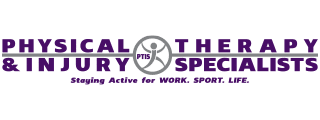Rotator cuff injuries are one of the most common causes of shoulder pain. Whether the result of repetitive motion, a sports injury, or wear and tear with age, this type of injury can make everyday activities difficult. Physical therapy plays a critical role in recovery and further damage prevention.

Understanding a Rotator Cuff Injury
The rotator cuff is a group of muscles and tendons that stabilize the shoulder joint and allow smooth movement. Patients may experience pain, weakness, or reduced range of motion when injured. Common conditions include tendonitis, partial tears, or complete tears. Early treatment is key to avoiding long-term complications.
How Physical Therapy Helps
Physical therapy focuses on restoring shoulder function and reducing discomfort without unnecessary reliance on surgery or medications. Treatment plans are designed around the severity of the injury and each patient’s needs.
1. Pain Management
Therapists often begin by using techniques such as ice, heat, or manual therapy to reduce swelling and discomfort. These approaches help prepare the shoulder for active rehabilitation.
2. Restoring Mobility
Stiffness is standard after a rotator cuff injury. Gentle stretching and guided exercises are introduced to improve flexibility and allow the shoulder joint to move more freely.
3. Strengthening Muscles
Weakness in the rotator cuff and surrounding muscles can slow recovery. Physical therapy uses progressive resistance exercises to strengthen the shoulder, helping to support healing and prevent reinjury.
4. Improving Posture and Movement Patterns
Poor posture and repetitive strain often contribute to shoulder problems. Therapists teach patients how to adjust posture, movement, and ergonomics to reduce pressure on the shoulder during daily activities.
Reference:ehs.unc.edu/topics/ergonomics/
5. Reducing the Risk of Surgery
Consistent physical therapy can often improve function enough to avoid surgery altogether. For patients who do need surgery, physical therapy before and after the procedure supports better outcomes.
Recovery Timeline
The healing process varies depending on the type and severity of the injury. Mild strains may improve in weeks, while more significant tears may take several months. Commitment to a structured physical therapy plan greatly influences recovery speed and success.
When to Seek Help
If you experience persistent shoulder pain, weakness, or difficulty lifting your arm, it may be time to see a physical therapist. Early intervention often shortens recovery and lowers the risk of long-term shoulder problems.
Final Thoughts
Physical therapy provides a safe, practical, personalized approach to treating rotator cuff injuries. By addressing pain, restoring motion, and strengthening muscles, therapy helps you recover and supports long-term shoulder health.
Contact Physical Therapy and Injury Specialists to schedule an appointment.
